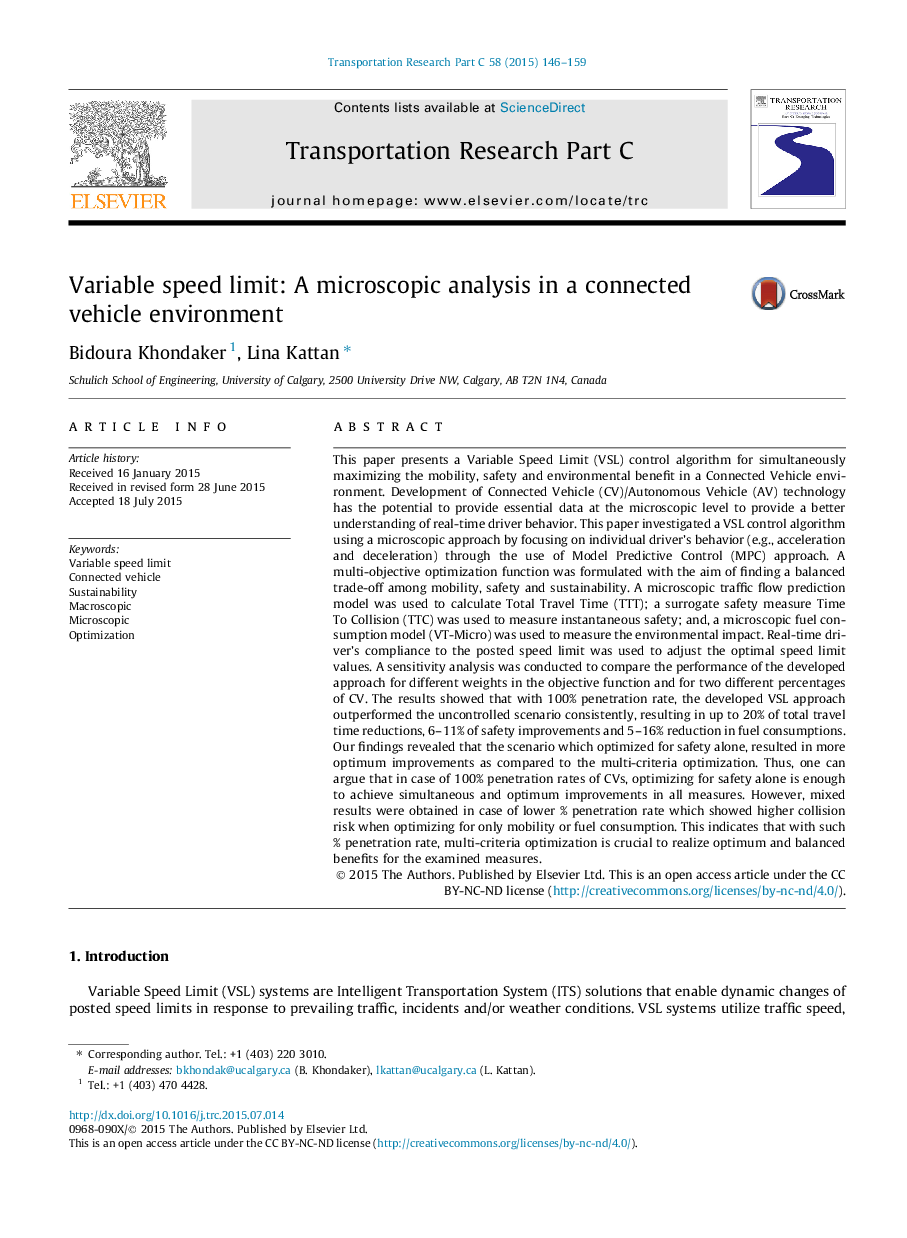| Article ID | Journal | Published Year | Pages | File Type |
|---|---|---|---|---|
| 10359047 | Transportation Research Part C: Emerging Technologies | 2015 | 14 Pages |
Abstract
This paper presents a Variable Speed Limit (VSL) control algorithm for simultaneously maximizing the mobility, safety and environmental benefit in a Connected Vehicle environment. Development of Connected Vehicle (CV)/Autonomous Vehicle (AV) technology has the potential to provide essential data at the microscopic level to provide a better understanding of real-time driver behavior. This paper investigated a VSL control algorithm using a microscopic approach by focusing on individual driver's behavior (e.g., acceleration and deceleration) through the use of Model Predictive Control (MPC) approach. A multi-objective optimization function was formulated with the aim of finding a balanced trade-off among mobility, safety and sustainability. A microscopic traffic flow prediction model was used to calculate Total Travel Time (TTT); a surrogate safety measure Time To Collision (TTC) was used to measure instantaneous safety; and, a microscopic fuel consumption model (VT-Micro) was used to measure the environmental impact. Real-time driver's compliance to the posted speed limit was used to adjust the optimal speed limit values. A sensitivity analysis was conducted to compare the performance of the developed approach for different weights in the objective function and for two different percentages of CV. The results showed that with 100% penetration rate, the developed VSL approach outperformed the uncontrolled scenario consistently, resulting in up to 20% of total travel time reductions, 6-11% of safety improvements and 5-16% reduction in fuel consumptions. Our findings revealed that the scenario which optimized for safety alone, resulted in more optimum improvements as compared to the multi-criteria optimization. Thus, one can argue that in case of 100% penetration rates of CVs, optimizing for safety alone is enough to achieve simultaneous and optimum improvements in all measures. However, mixed results were obtained in case of lower % penetration rate which showed higher collision risk when optimizing for only mobility or fuel consumption. This indicates that with such % penetration rate, multi-criteria optimization is crucial to realize optimum and balanced benefits for the examined measures.
Related Topics
Physical Sciences and Engineering
Computer Science
Computer Science Applications
Authors
Bidoura Khondaker, Lina Kattan,
